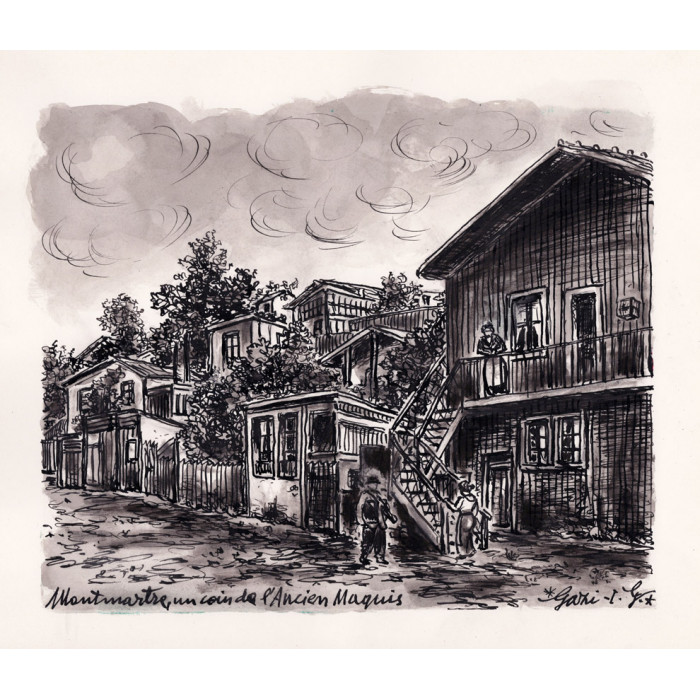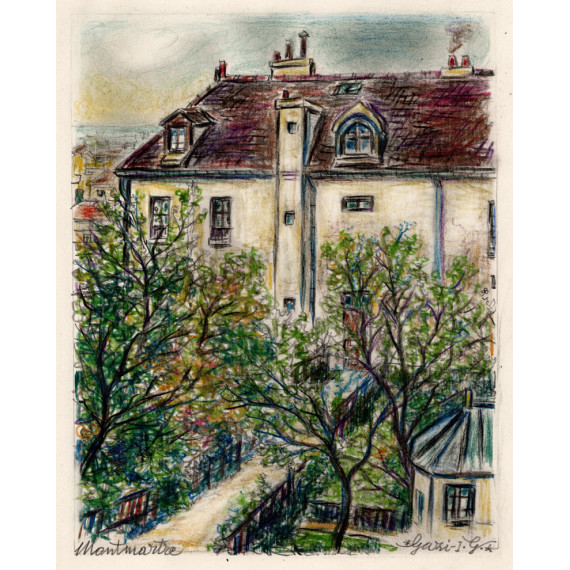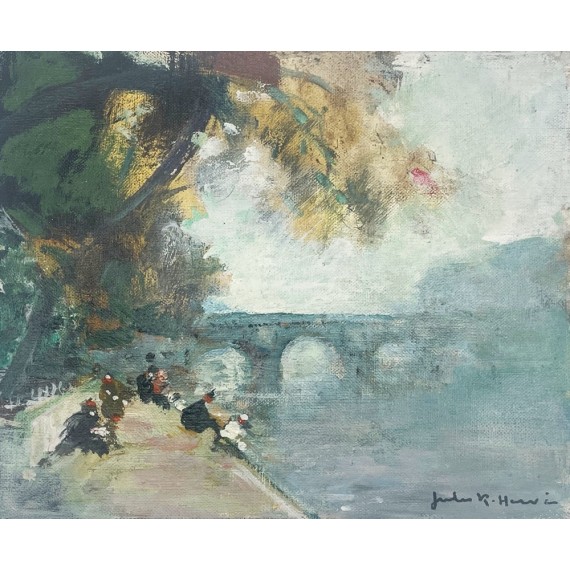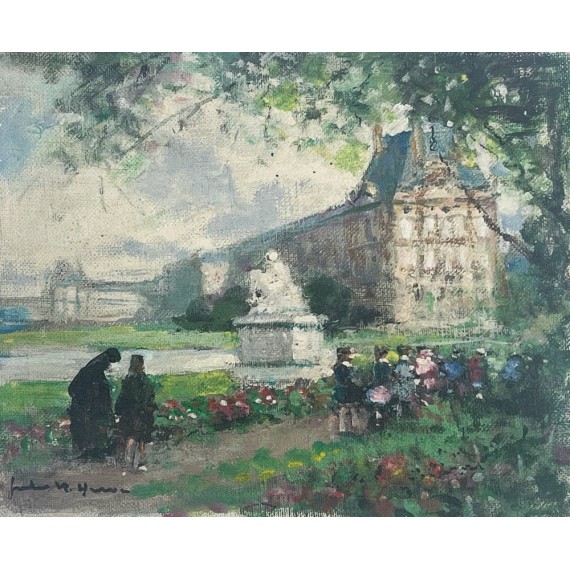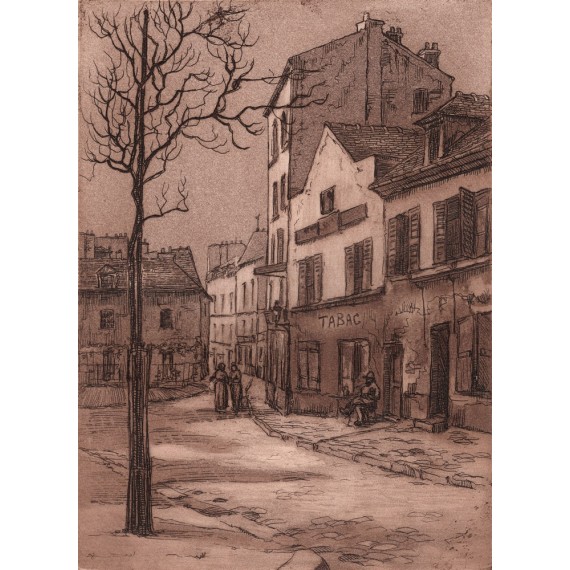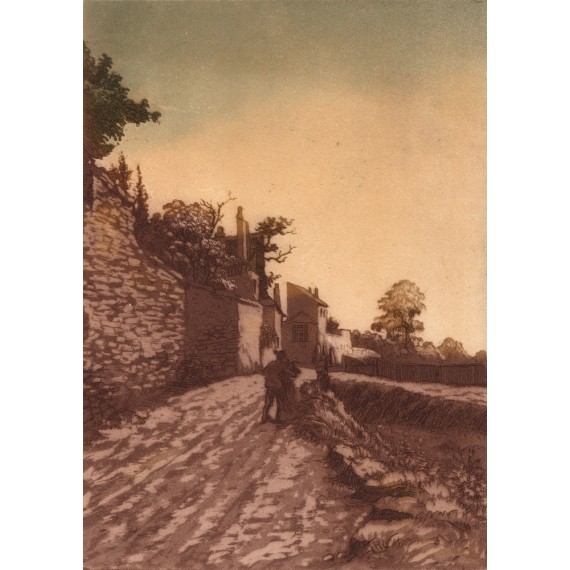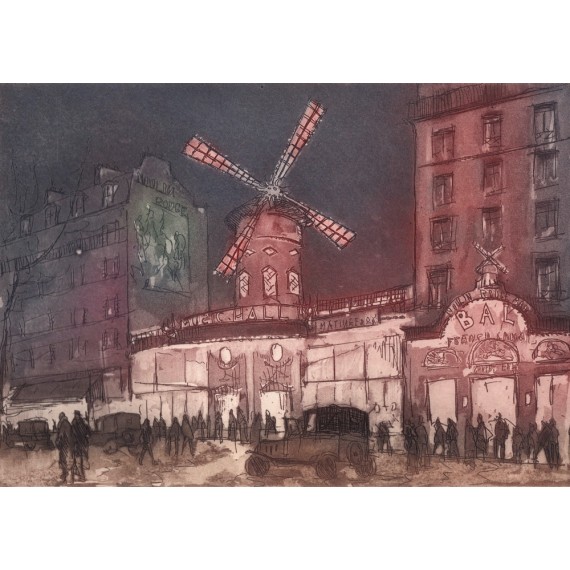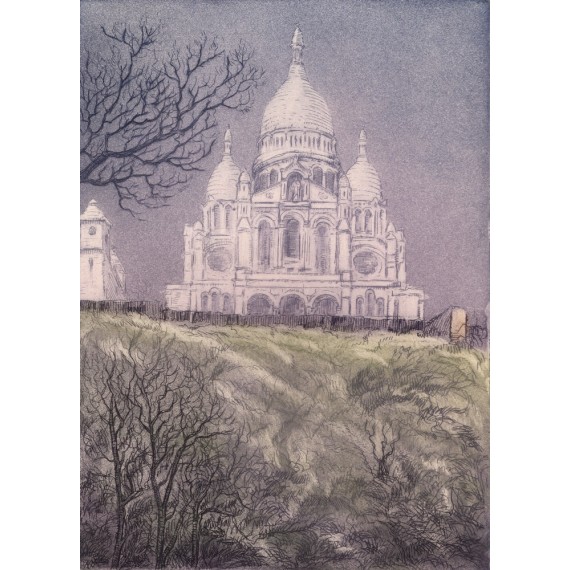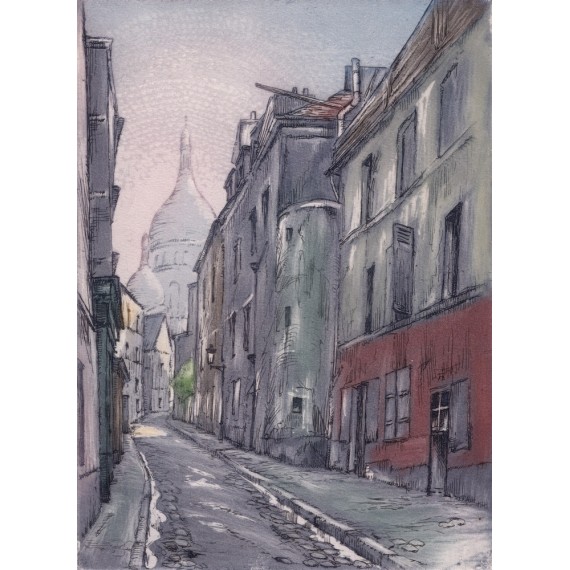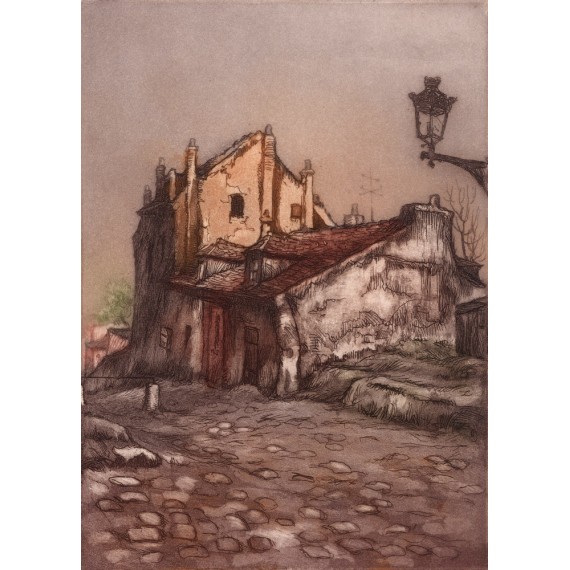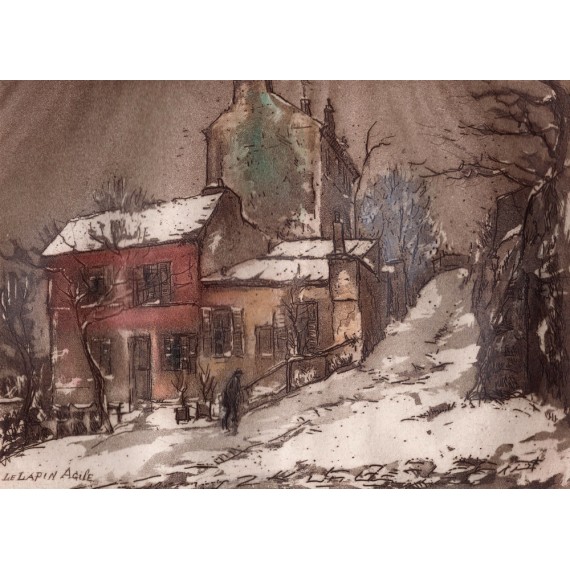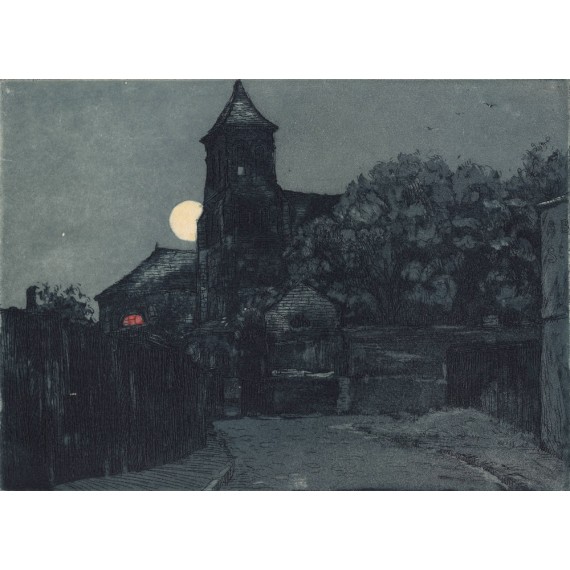Gazi the Tatar
"Montmartre, a corner of the old Maquis"
Ink drawing. Sign. Titled.
Size without marges : 22 x 27 cm.
***
GAZI THE TATAR
Painter. Crimea 1900 - Montmartre October 31, 1975.
His Excellency, Prince Gazi-Igna Ghirei was born in Crimea around 1900, descendant of Genghis Khan by his father, Prince of Crimea, who lived in the castle of Batshi-Sarailh, on the shores of the Black Sea, which later became the summer residence of Soviet leaders., It was there that the Yalta agreements were signed., The Bolshevik revolution of 1917 chased them from their country, they took refuge in Italy, the young Gazi then enrolled in Fine Arts from Naples., His father died in troubled circumstances, no doubt murdered by the Bolsheviks, he nevertheless continued his studies, and visited Italy in order to perfect his knowledge of the Italian masters., In 1920, he settled in Paris, in the Latin Quarter., He frequents the artists of Montparnasse.
Around 1934, Gazi met Suzanne Valadon, with whom he was to live, from 1935, the house on rue Lepic, abandoned by Utter. He considers Valadon as his adoptive mother, and Maurice Utrillo as his birth brother.
On the death of Suzanne in 1938, he lived in Place du Calvaire and led his activities as a painter and restorer of the cult of Notre-Dame de Montmartre who is also the patron saint of artists. At that time his works are very close of those of Utrillo, as much by the subjects as by the matter, but the drawing is more precise, drier.
His watercolors and drawings denote more poetry than his paintings.
Bedeau at Saint-Pierre church, he honors the cult of the Virgin Mary, patron of artists from all over the world.
Gazi died in 1975, in complete destitution, according to his own wish. Buried in the Pantin cemetery, before being transferred to the Saint-Vincent cemetery, not far from the grave of Maurice Utrillo.
What a strange destiny that that of this prince, distant descendant of the greatest conqueror in history, came to end his life in misery in Montmartre, painter and Christian.
© TEXT FROM THE DICTIONARY OF PAINTERS IN MONTMARTRE BY ANDRÉ ROUSSARD

